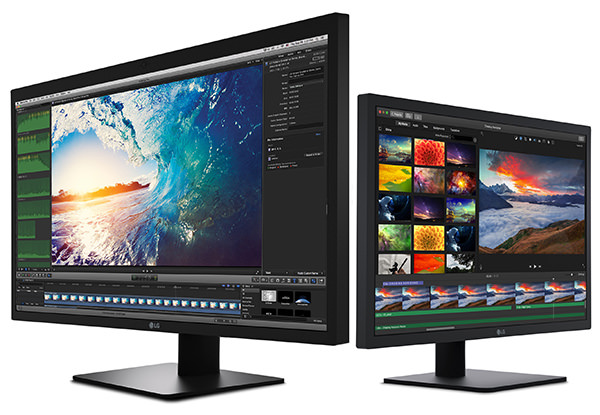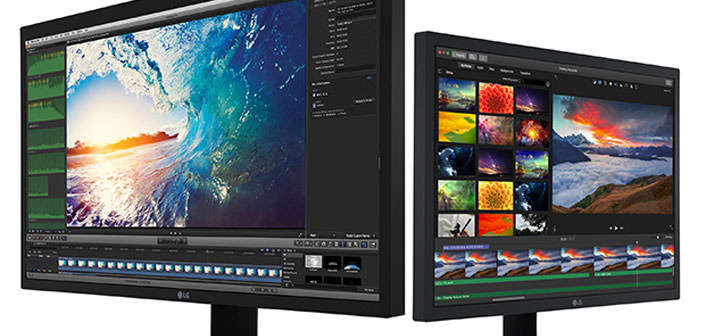Apple and LG have announced two new very similar monitor, such as technical specifications, those built on the iMac. They are the perfect complement to the new MacBook Pro.
During the event Hello Again, Apple and LG have announced two new monitors LG UltraFine 21.5 and 27 inches. Characterized by a very high video resolution, 4K and 5K respectively, the two panels are the perfect complement to the new MacBook Pro and MacOS.
The entry-level model uses a 21.5-inch panel marked as 4K, but the panel has a resolution of up to 3,840×2,160 pixels typical of multimedia standards. The display has a resolution of 4,096×2,304 pixels, combined with a maximum refresh rate of 60Hz. LG UltraFine 27 has a 27-inch panel also in non-standard resolution, with a 5,120×2,880 pixels computation, always at 60Hz. Both models have an IPS LCD matrix.
 The 21.5-inch 4K model connects through a single DisplayPort 1.2 connector, to connect the 5K variation, there will be two. If instead you use the Thunderbolt 3 standard for the connection avoids the need to use the dual-cable solution also on the 27-inch model.
The 21.5-inch 4K model connects through a single DisplayPort 1.2 connector, to connect the 5K variation, there will be two. If instead you use the Thunderbolt 3 standard for the connection avoids the need to use the dual-cable solution also on the 27-inch model.
In this case, thanks to the USB-C ports compatible with Thunderbolt 3 on the MacBook, the monitor can it load the notebook connected and the supply of 3 ports additional USB-C.
The remaining features of the two panels are the same: both have a maximum brightness of 500cd/m² and are compatible with the P3 display standards with regard to color saturation. It must consider that, where UltraFine 21.5″ has a depth of 8bit color, the 27-inch model boasts among the technical specifications a depth of 10-bit. Both models have viewing angles of 178° and stereo speakers.
Only the 27-inch model has a camera with built-in microphone for audio and video calls. It is similar specs to those of the iMac, which the rest of panels are manufactured by LG. It is likely (but not official) that integrated panels on new UltraFine 21.5 and 27 are the same as the iMac, only commercially sold as stand-alone products. The use of Windows PC is not recommended, or rather should be avoided.
Because of the color space on the Microsoft operating system management, it is likely that many applications of this show and not over saturated colors faithful to the original images, plus they do not have physical buttons for color correction and functionality. It is based on integrated control of MacOS for its configuration. It can answer for example, the pressure of the volume and brightness button’s keypads Mac, but not necessarily do the same with input from Windows.

